#medieval latin? for some reason?
Text
The Apparition Creature Runes
This post is to organize the thought process the Eden’s Rest discord server went through trying to figure out what the runes in the Apparition drawing really mean.
I hope my explanation is clear enough to follow!

We went from casually wondering what the runes meant to realizing they spelled nothing, to trying to flip them upside down and realizing they still spelled nothing, to finding a tik tok that led down a new rabbit hole entirely.
The person in this tik tok talks about an article they found about medieval language. SMCEN was written as smœn (which is also written as smoen).
Here’s the link to the article they were talking about in the tik tok:
https://www.jstor.org/stable/43628078
You can only access the article if you have a subscription to jstor, whether through your school or otherwise, but the sample page here has the passage the tik tok is talking about. Trying to figure out the literary jargon hurt my head. It talks about “mamorian” and “mamra” (which come from the same root word) meaning “to be deep in thought about something” or “sleep.” Trying to clear up what the article was saying about “smoen” after that and connect it all together was hard but here’s what i got:
It seems to say that smœn is linked to the word smean, which is a variation of the Old English word smeagan.
From the Wikipedia entry for smeagan ( https://en.wiktionary.org/wiki/smeagan#Old_English ):
Verb
smēaġan
consider, think about
meditate
examine, scrutinize, question
These definitions line up with the definition assigned to mamorian. I hope you can follow how my brain made this leap, but this made me feel confident enough to say the jstor article is saying both mamra and smoen mean sleep or at least something similar to it.
So we have our translation of SMCEN:
SLEEP
The rest is far less confusing. I think.
Now that I knew I should use Smoen as a search term and that it was a medieval word, google helped me a lot more.
I found this book about the Magical Treatise of Solomon:
issuu
You can search the book for the word “smoen” and that’s how I found a lot more I could use to find answers.
I found some alternate versions of smoen that helped with searching: Skonin and Skoen
I found that Smoen was a demon linked to the angel Patiel (or Pathiel)
This book also has a whole page of runes, some of which are similar to the Sundowning runes. It’s page 323 of the book if you want to see.
This book has a lot to it, but for the purposes of this rune translation attempt, I moved on.
The book mentioned lots of Greek words and names so I applied that to my search for the meanings of the other runes.
In Greek and Latin the letter j did not exist. “I” was used in place of “J.” So I switched the j in the remaining runes to an i. (AJR -> AIR)
I searched for info on ESIO maybe being a medieval latin word and I found this source:
(which is from the Dictionary of Medieval Latin from Celtic Sources)
It said this:
estio --> esio
esto (adv.)
esto (adv.)
so i searched for Esto and found this: https://en.wiktionary.org/wiki/esto
And that said…
Etymology 1
Form of the verb edō (“I eat”).
Pronunciation
(Classical) IPA: /ˈeːs.toː/, [ˈeːs̠t̪oː]
(modern Italianate Ecclesiastical) IPA: /ˈes.to/, [ˈɛst̪o]
Verb
ēstō
second/third-person singular future active imperative of edō
So I think ESIO could mean EAT.
At this point my brain was leaking out of my ears so I gave up thinking. I decided AIR just meant AIR.
Air = Breathe???
And that’s the story of how the discord chat decided it said...
EAT BREATHE SLEEP
The end?
Eden's Rest friends involved in the making of this monster: @ccsven and @r-e-dax-t-e-d
Here’s @ccsven's drawing where we started trying to figure out wtf that said. And oh man, did we. Did we? I still don’t know.

#sleep token#sleep token runes#the apparition#sleep token lore#medieval latin? for some reason?#following these brain worms was an out of body experience#finally...i can rest#eep token
46 notes
·
View notes
Text

Enter Geoffrey of Monmouth, or Galfridus Monumotensis if you're a stubborn human who doesn't think she needs a translation.
#might post some of mine if I'm reasonably sure of its accuracy#and/or feel like showing off#geoffrey of monmouth#galfridus monumotensis#historia regum britanniae#latin#medieval literature
6 notes
·
View notes
Text
medieval monks and accountants start using Italian millione ("one thousand" + augmentative suffix) to mean 10^6 by the 1200s; this spreads to other languages
Jehan Adam coins bymillion and trimillion to mean 10^12 and 10^18 in 1475
Nicolas Chuquet extends this scale up to nonyllion (10^54), with every step being another six orders of magnitude (million, byllion, tryllion, quadrillion, quyllion, sixlion, septyllion, ottylion, nonyllion) in 1484. Note that in this period, it was common to put the digit separator every six digits instead of every three.
Guillaume Budé refers to 10^9 as milliart in 1516, in a Latin text
But in 1549, Jacques Pelletier du Mans uses milliard to mean 10^12, citing Budé as a source
In the 1600s, people start putting digit separators every three digits. But some scientists and mathematicians define the numerical scale according to how digits are grouped, rather than the actual order of magnitude: thus, one billion becomes 10^9, one trillion becomes 10^12, etc, creating the short scale.
"Milliard" is eventually added to the long scale, meaning 10^9 (in keeping with Budé's usage); the first published example is from 1676
By 1729, the short-scale meaning of "billion" (10^9) has already crept into American usage
This is in keeping with French usage at the time: in 1762, the Académie Française dictionary cites billion as meaning 10^9.
By the early 19th century, France has almost completely converted to the short scale, and U.S. usage follows France; the long scale is referred to in some sources as "obsolete." But Britain is still using the long scale (and I assume Germany and most other European countries)
Over the course of the 20th century, the long scale begins to become more influential in France, presumably due to the influence of continental usage; while the short scale becomes more influential in Britain, presumably due to the influence of American English. Notably the SI system very specifically uses unique prefixes that are the same across languages, to prevent confusion!
In 1961, the French Government confirms that they're going to officially use the long scale from now on; in 1974, Britain officially switches over to the short scale, and many other English-speaking countries follow.
In 1975, the terms "short scale" and "long scale" are actually coined, by mathematician Geneviève Guitel.
One reason large number names could be so unstable for so long is, of course, that outside specialized usage they are rare, and were even more rare before modern science and large modern monetary amounts became commonplace points of discussion. Wikipedia says "milliard" wasn't common in German until 1923, when bank notes had to be overstamped during Weimar-era hyperinflation.
As it currently stands, English, Indonesian, Hebrew, Russian, Turkish, and most varieties of Arabic use the short scale; continental Europe and most varieties of Spanish outside Europe use the long scale. A few countries use both, usually in different languages, like South African English (short scale) and Afrikaans (long scale) or Canadian English (short scale) and Canadian French (long scale) . Puerto Rico uses the short scale in economic and technical usage, but the long scale in publications aimed at export.
Notably some languages use neither, having their own names for large numbers--South Asian languages have the Indian numbering system, and Bhutan, Cambodia, and various East Asian languages also have their own numbering systems. Greek, exceptionally, uses a native calque of the short scale rather than a borrowing.
1K notes
·
View notes
Text
Alt text is so incredibly useful when it comes to speakers of other languages. I follow a bunch of fiber artists from different parts of the world, Ukrainian fashion designers and Chinese antique garment collectors and Iranian university professors of textile art history. There are discussions happening in different languages, and resources like books and scholarship, simply not available in the English or French I know.
And a lot of them never even use the Latin alphabet a lot of the time! So sometimes I can photograph a book page or screencap an Instagram story and get my phone's OCR to give me text to paste into Google Translate, and I can sometimes use a Cyrillic keyboard to type out what I'm seeing, but but as soon as something is antiquated or handwritten or viewed at an angle, my goose is cooked. I can't even get the original phrase to try to translate at all.
Unless there's alt text. Because alt text gives me exactly the data I need in the exact right format to take to a dictionary and get the gist of what's going on.
It makes me reconsider how my own content is accessible or inaccessible not just to blind or visually-impaired people, but people who aren't perfectly fluent in English. Because I and a lot of my friends are native English speakers who usually only speak 1-2 languages total, I'm prey to assuming that everyone in my intended audience is like us. That of course everybody can easily process English text, whether it's printed or written in cursive or using some antique calligraphic hand. And of course, that's not true. Now when I look at my analytics for my business's rare medieval name, I occasionally see translation site traffic where people in Farsi or Ukrainian or Chinese have translated me in return.
The curb-cut effect is a wonderful thing, I think. The primary reason I've used alt text is a good one, and it also turns out that it's really useful for a lot of other people too.
337 notes
·
View notes
Text
Writing Reference: Symbolism of Colors

Colors are proven to have a profound effect on the human psyche and moods.
Territories use colors to represent themselves on their flags.
The significance of colors is proven by the high value that our ancestors placed on certain plants or substances that could be made into dyes, such as the Imperial Purple of Rome that was produced from a mollusk that was valued more highly than gold, or the saffron crocus that produced the sacred color of the same name.
Prior to the development of chemical dyes, the creation of colors that did not fade in the Sun or wash away was a combination of art, science, and magic, akin to an alchemical process.
The impact of the Sun shining through stained glass, painting the interiors of churches with living colors that shimmered and danced, in a medieval world where color was often a privilege of the wealthy few, can only be imagined.
The 7 colors of the rainbow—which break down into 700 shades that are visible to the naked eye—are associated with the seven planets, the days of the week, the Seven Heavens, and the seven notes of the musical scale.
Symbolic Meanings of Some Colors
BLACK
Night, the absence of light; mourning, sobriety, denial; authority; perfection and purity; maturity and wisdom.
Although it’s the opposite of white, both shades are, in fact, due to an absence of color, and technically speaking black is not a “color” at all. This doesn’t stop it having a wealth of symbolic meaning.
BLUE
Truth and the intellect; wisdom, loyalty, chastity; peace, piety, and contemplation; spirituality; eternity.
There’s something cool and detached about blue that gives rise to its reputation for spirituality and chastity. Above all, blue is the color of the sky. Like the sky, blue is infinitely spacious. It contains everything, and yet contains nothing. The color is therefore associated with ideas of eternity.
BROWN
Poverty, humility, practicality.
Primarily associated with the Earth, soil, the raw element before it is covered with greenery. The word for earth, in Latin, is humus, which carries the same root as humility. Religious ascetics wear brown as a reminder of this quality and also of their voluntary material poverty.
GRAY
Sobriety, steadiness, modesty.
Gray is the midway point between black and white, and tellingly the “gray area” is an area of indetermination, indecision, or ambiguity. To be described as gray is rather less than flattering, since gray is such a subdued and neutral color, and implies that the person blends into the background.
However, gray is also a color of balance and reasonableness and is the color used, in photography, to balance all others.
Because people’s hair turns gray with age, the word is often used to describe elderly people and is also a color of wisdom.
GREEN
New life, resurrection, hope; the sea; fertility and regeneration; recycling, environmental awareness; a lucky color; an unlucky color.
Green is an amalgam of blue and yellow, and is the color of the
fourth chakra. Green is the universal symbol for “Go!” to red’s
“Stop!”
MOTLEY
Wealth; a chameleon personality.
Not strictly a color as such, but a combination of many other colors. The word is generally used to describe cloth or clothing. The rainbow nature of motley means that whoever wears it has as many aspects as there are colors, a chameleon personality, and it can indicate the trickster or fool (as worn by the jester, or the Fool in the Tarot) as well as kings, emperors, and deities.
In the Bible, Joseph’s coat of many colors is the object of much envy.
ORANGE
Balance between spirit and sexuality; fertility and yet virginity; energy; the Sun; like yellow, orange is believed to be an appetite stimulant.
Orange has two aspects that we see time and time again, pivoting between the material and spiritual worlds, which is not surprising given that the color itself is a balance between red and yellow. As such, it represents the second chakra, the first being red, and the third, yellow.
PINK
Femininity, innocence, good health, love, patience.
Pink is the ultimate feminine color, being flirty, girlish, and innocent at the same time. Pale pink is used as the symbol for a baby girl, just as pale blue is used for baby boys. This feminine angle is why the color pink has been adopted as a symbol of gay pride. Pink is the color of universal, unconditional love.
PURPLE
Royalty and pomp; power, wealth, majesty.
Purple, or indigo, is the color associated with the sixth chakra. Since it was first discovered, purple has been the color of choice to denote wealth and power. Emperors, kings, and the more powerful members of the clergy—such as bishops—choose the colour as a way of defining their status. This is because the dye itself was originally available from one source and one source only; the secretions of a certain gland of an unfortunate sea snail called the Murex brandaris. Therefore, purple was extremely costly to produce and strictly the color of those who could afford it, since the dye itself was more expensive even than gold. The most popular shade of the color is called Tyrian Purple (named for the city of Tyre, where it was manufactured).
RED
Vitality and life-force; fire, the Sun, the South; blood; good luck and prosperity; power and authority; masculine energy; war and anger; passion, energy, sexuality.
One of the three primary colors, bright red pops out of whatever environment it happens to be in and grabs our attention more than any other color. Moreover, it is the first actual color that is seen by babies.
SAFFRON
Spirituality, holiness, good fortune.
Named after the saffron crocuses whose stigmas create the color, the harvesting of these delicate plant parts is a labor-intensive and time-critical matter and so the actual dye is costly to produce.
VIOLET
Knowledge and intelligence; piety, sobriety, humility, temperance; peace and spirituality.
Violet is the color associated with the seventh chakra. There are many shades of violet ranging from ethereal pale shades through to the darker mauve, considered the only color acceptable as a relief from the relentless strict mourning convention of black and gray in Victorian times. Violet is a combination of red and blue, and its association with temperance is indicated in some Tarot suits.
The humble qualities of violet as a color come from the flower. The tiny violet grows close to the ground, hidden modestly in among the grass, yet noticeable because of its striking color.
WHITE
Purity, virginity; death and rebirth, a beginning and an end; in the Far East, mourning.
White is both the absence of any color and the sum of all colors together, so in a sense it can mean everything or nothing. This combination of all colors has given white the name of the “many-colored lotus” in Buddhist teachings.
YELLOW
The Sun; power, authority; the intellect and intuition; goodness; light, life, truth, immortality; endurance; the Empire and fertility [China]; cowardice, treachery.
Yellow is one of the three primary colors and is related to the third chakra which lives in the region of the solar plexus. This is apt, since yellow, like red and orange, is one of the Sun colors. It could be argued that yellow is the most dazzling of the three, so the association makes good sense.
Because leaves turn yellow and then to black with the onset of fall, in several places, including Ancient Egypt, yellow is a color of mourning. A yellow cross was painted on doors as a sign of the plague, possibly for the same reasons, and even today yellow marks off a quarantined area.
Source
More: On Colours
#writing reference#colour#symbolism#writeblr#spilled ink#dark academia#literature#writers on tumblr#writing prompt#poetry#poets on tumblr#studyblr#writing inspiration#rainbow#writing ideas#writing inspo#creative writing#writing resources#light academia
97 notes
·
View notes
Note
“There’s something aesthetically pleasing about the word noon. Its palindromic spelling feels appropriate for the middle of the day, when the sun is directly overhead and the hands on the clock are pointed upward in a straight line. It’s even spelled with letters found more or less in the middle of the alphabet.” (“What Time Is…” par. 1)
Perhaps unfortunately for my argument, this article goes on to explain how the word ‘noon’ originally referred to the ninth hour of the day, that of course being 3 o’clock; because the sun and with it the people rose at six. It is derived from the Latin word for ‘ninth’, ‘nonus’. The word’s meaning apparently shifted during the twelfth century, because of the prayers of monastic orders. The second of three daily prayers would occur at noon, and the time of this prayer eventually became earlier, landing at twelve. This is believed to have been so the monks could break their fast sooner. Of course, this is not universally agreed upon and other theories include shifts in seasonal daylit hours, and European Medieval people’s struggles to have accurate timekeeping.
None of my sources suggest that three o’clock was considered the middle of the day at any point in time, therefore I would like to argue that the word noon did not originally refer to the middle of the day, but eventually, when it was given to the time that is more deserving of that title, came to do so. I believe that the denotation “middle of the day” is something that is both scientifically and culturally awarded, and that for whatever reason the people (however unknowingly) creating the Old/Middle English language believed twelve o’clock to be so. If you wish to create your own cultural norms, by all means go ahead, just remember that the word culture refers to a group, so you’ll need to find some people who agree with you. (Which, hey, maybe you already have, maybe most people agree with you and I’m just being pedantic.)
Anyways um hi, sorry about this, I did in fact make a tumblr account solely to send you this, because the idea of doing so was too funny to me to not. Also, I just discovered that the Oxford English Dictionary website has a pay wall these days and I am DEVASTATED I tell you, devastated. But yeah, I’ll stop, have a good weekend, I love you, I hope your morning spent on public transit hasn’t been too boring.
Works Cited
“Culture Definition & Meaning.” Merriam-Webster, Merriam-Webster, www.merriam-webster.com/dictionary/culture. Accessed 2 Mar. 2024.
“Noon (n.).” Online Etymology Dictionary, www.etymonline.com/word/noon. Accessed 2 Mar. 2024.
“What Time Is ‘Noon’?” Merriam-Webster, Merriam-Webster, www.merriam-webster.com/wordplay/noon-history-ninth-prayer-hour-nones. Accessed 2 Mar. 2024.
OFC you’re leaving citations on A TUMBLR ASK OH MY GODDD anyway I do believe I’m starting a cultural shift because everyone I’ve asked so far has NOT said mid-day is noon they’ve ranged from 11-1 to 1-2 (albeit a bit earlier than my 2-3 answer but STILL)
Yknow what fuck it let’s do a poll bb
anyywayyyy everyone say hi to my girlfrienddd give them a nice warm welcome to tumblr <3
#HIII GIRLFRIENDDDD HIIIII#I love you toooo#getting on the metra rn wish me luck <33#ask#polls but not#starry eyed
177 notes
·
View notes
Text
DAY 5946
Jalsa, Mumbai May 29/30, 2024 Wed/Thu 1:53 AM
🪔 ,
May 30 .. birthday greetings to Ef Mahmud Chowdhury from London 🇬🇧 .. and Ef Heena Bhambhani .. 🙏🏻🚩❤️
work done for the cause of the general .. for the hopeful understanding of why it is being done .. of the desire to be assured that it may make some sense in the execution of some of the pointers spelt out ..
and then some more .. more ideas that have not been covered and not been drawn in the creative ..
I work for the campaign on Road Safety .. to be able to personally share some of my experiences on how this should be designed and brought to the people in general that have the right and privilege to use roadways , vehicles and the discipline and understanding that road safety in its execution may bring about a better discipline ..
It can never be a statement .. it must contain the psychological temperament of the viewer and the listener .. when you command for understanding it is often taken in the wrong spirit .. a lot needs to be put into the reason for the Campaign and the essential pointers that all motorists and pedestrians must believe and understand for a better temperament and safety on our roads ..
it shall be a long drawn battle .. but like all else, when the cause is understandable .. when the cause is right , then all else falls into place ..
It needs a continuous rendering ..
Talking about it in a formality and then forgetting it as 'job done' is the worst status of its bearing .. you have to persist , persevere , and determine a will that eventually shall work for the benefit of the reason it was done ..
So yes .. I commit myself to the fruition of the campaign .. and shall persist to the best for its victory ..

hand on heart to set the nature for the purity of the mission ..

salutations for them that support and volunteer to assist in the need ..







.. and have the great pleasure of my cute sweet colleague in front of the camera .. tresses and all .. 🤣





yes the moments in pictures are repeated .. for little girls be the sweetest of all ..
and the thoughts go back to that masterpiece of a film GIGI .. and the song
'Thank Heaven for little girls'
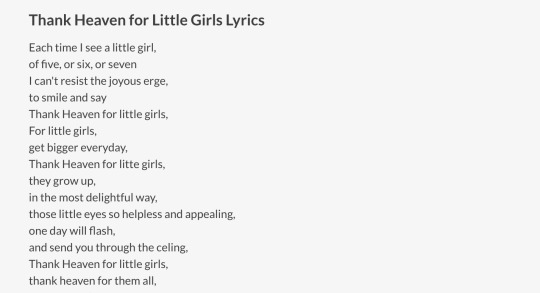
the song sung in its most inimitable rendition, by the great Maurice Chevalier .. and starring the most handsome man of the times Louis Jourdan !!
Ah .. those were the days my friends .. sadly lost in the speedometer of modernity and time ..
and my gratitude to the enviable Avinash Gowarikar for his photographic senses and the ability to capture you and make you look grand .. despite the flaws of age !!

I leave my liege
liege
"Since modern populations often ignore aristocracy (except in the case of tabloid coverage), many words once used for royalty are now unusual and obscure. Such is the case with liege. If you refer to someone as "my liege" you are probably playing a game.
Ah, the Medieval era, where we find the word liege as we know it, a term used by underlings for the lord of their land. The word was probably of Germanic origin, derived from the Medieval Latin laeticus. In an interesting etymological twist, the word at one time meant a leader of a band of free men — pretty much the opposite of its eventual meaning as a feudal lord. The word is not used much today, except in jest (see Python, Monty)."
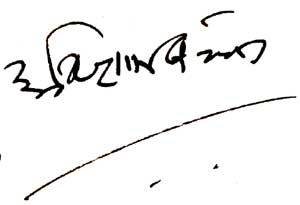
Amitabh Bachchan
102 notes
·
View notes
Text
Feels like a lot of work to ask this
but next time you refer to some etymology or word used as Ancient Greek, please kindly consider to check out whether this word is extant and used in Modern Greek. If you refer to all words as Ancient Greek, you spread the usually false impression that these words are dead, only revived thanks to English and other western scientific terminology (while they might as well be everyday words for the Greek speakers), you obstruct a chance of exposure to Modern Greek which is viewed as totally disconnected and irrelevant, and you strip it from its lingual legacy.
So, if a word has indeed fallen out of use, by all means, call it what it is, Ancient Greek. If it’s only used in Modern Greek, which is a possibility you will likely never stumble on as Modern Greek roots barely exist at all and they are just colloquial epithets (which is also why it doesn’t make much sense to emphatically distinct a root as Ancient because there’s little else it can be anyway), call it Modern Greek. (Always talking about Greek roots, this is not about loanwords or foreign roots.)
If however it exists both in Ancient and survives in Modern Greek, which is 90% of the time, just call it what it really is. Greek.
Another reason it is very unlikely for you to be referring to exclusively Ancient Greek words that are dead in Modern Greek is because the Greek words you usually refer to are words that passed from Latin and Medieval Greek to the western languages. If a Greek word survived well into Medieval Greek and / or passed to Latin, then it has 99% of the time survived into Modern Greek. Exclusively Ancient Greek words that have fallen out of use are usually Homeric and Archaic words from non-Ionic dialects that were already fading in Classical and early Hellenistic times. So the odds of you referring to such words, unless you are a linguist of archaic non-Ionic Greek, are very very slim.
And if it’s too much work to ask (how much time do you spend mentioning Greek etymology though?!), then again just call it Greek because you can’t go wrong with this and you save yourself from an extra word. It’s that easy and is the safest choice.
324 notes
·
View notes
Text
Some stuff I learned at the Medieval Studies Congress today that will be of interest/use for Midgaheim:
There's a passage of Beowulf that, in the original old English, lists Grendel's kin/fellow descendents of Cain (the biblical first murderer). Two are easily translated to modern English: elves and giants (specifically "gigantes," one of the few times the poem uses a latin word rather than an Old English word, which probably specifically implies these are Biblical giants/nephilim like Goliath). The other two words are hard to parse because they have no modern English equivalent, and different translations use different words to try to give the same flavor. One is translated roughly as phantoms, undead, revenants, draugr, goblins, evil spirits, or demons, while the other is translated as trolls or ogres. However, both of those words mean something different than those equivalents - in the second term's case, it specifically means Jotunn, i.e. frost giants. And that's especially important for two reasons: 1, Grendel is referred to as being most closely related to that term, sometimes outright being called a Jotunn, and 2, Jotunn are VERY different than giants/ogres mythologically speaking, and the Beowulf poet would have known that. Troll is probably the best fit of all modern English monster words, since trolls were synonymous with Jotunns (and most other monsters) early in the history of Germanic languages, but the word Troll now means its own specific thing, so it's still not a good fit, and as the speaker surmised, it's probably best just to translate Jotunn… as Jotunn.
On a related note, the word "Ettin" is derived from Jotunn, so at some point I should make Midgaheim Ettins some sort of sister clade of ogres to Jotunns.
Beowulf says that giants were "wiped out in the flood," and because it specifically uses the Latin word "gigante," it's likely this is a reference to the death of the nephilim in Biblical apocrypha. BUT! Given how "Jotunn" is used often in the poem, it could alternatively refer to the flood of Ymir's blood in Norse mythology that ALSO wiped out a population of giants. OR! it could refer to BOTH, which would be an explicit instance of the poem trying to fit Norse myth and Christian apocrypha into one united mythos. It is possible the Beowulf poet may have been trying the same heretical bullshit I've been doing in Midgaheim.
A prominent theme in Norse myth was people who act monstrously turning into monsters as a result, and it's possibel that the word "Jotunn" may be rooted in the Germanic word for Gluttony, since early descriptions of Jotunns describe them as cannibals/maneaters whose voracious appetites are particularly destructive - a trait that they share with folkloric ogres across Europe.
Dragons, especially in Norse myth, have some psychopomp connotations, particularly with regards to the word "wyrm," which has always had an intended double meaning to include both serpents/reptiles and vermin/invertebrates. A wyrm is both viper and maggot, snake and worm, with the connective trait that unites all things under the category being its ability to inspire a primal fear. The Beowulf dragon specifically has connotations with Death and Rot, living in an ancient grave and ending the life of the near-unkillable hero of the poem. Nidhoggr also fills this role, as do his fellow root-chewer dragons who torment the particularly dishonorable dead in Norse Hel.
Gawain and Lancelot were disaster bisexuals. It is also probably arguable that most if not all of the knights of the round table are disaster bisexuals, but Gawain and Lancelot definitely are.
At least one incarnation of King Arthur kinda blatantly desired to be a throuple with Gwenevere and Lancelot, which would have solved so many problems. Like, he was aware both Lancelot and Gwenevere were more functional when they could fuck, and he loved them both dearly so come on, let them be a throuple.
There's a good argument that many, if not all versions of Mordred could have been gay.
One Gawain story has him accidentally kill a woman while getting into a fight with a knight over a dead white stag, and Gwenevere tells Gawain that from this day on he has to take a solemn vow to ALWAYS respect and protect women. Or, to sum up:

Lanval was a sub and that's why the fairy maiden asked him to visit her. Their dynamic also subverts a lot of medieval expectations of masculinity and feminity in Marie de France's version of the story, which subsequent authors tried to "fix" in later retellings - a big example is how in Marie's version, the Fairy Maiden steers the horse that rescues Lanval, while in subsequent retellings Lanval gets to steer despite the Fairy Maiden being the one who came to the rescue. Marie's version has both of them take on masculine and feminine roles, serving and protecting each other in turn, and seems to have this message that a good relationship should be an equal partnership where both sides shoulder each other's burdens while also caring for themselves. Marie de France continues to be my favorite medieval writer.
There was a lot of argument and theorizing about the nature of souls as incorporeal things that still can feel pain, with a lot of Christians arguing about what pain means to a spirit without a body, and how exactly hellfire can hurt a soul without a body. Dante kinds put the final word on it by drawing on the fact that angels and demons, who are beings of soul without corporeal forms, can create corporeal representations of themselves from air, smoke, fire, and light - damned souls are given substance, and thus pain, by Hellfire that wraps around their bodies, with one passage of inferno describing how the fire surrounding Ulysses curls at one point "almost like a tongue" to allow him to speak. The fire is also something that, depending on how you translate the poem, may be self inflicted - summoned by the sinner, or at least manifesting as result of their sins and faults, which goes with the theme of Dante's Hell where all the punishments are self inflicted/reinforced by the sinners themselves.
There's a medieval French poem about an island called Cokaygne (pronounced "Cocaine," no I'm serious I'm not shitting you it's called Cocaine) where the houses are made of crepes/pancakes, the rivers are made of sweet milk, food is plentiful, the weather is never bad, predators and disease are nonexistent, and the only people who live there are monks and nuns who spend all their time eating, resting, and engaging in kinky and satisfying sex. The poem is a satire of other stories of the time that attempted to describe Heaven, and explicitly says Cokaygne (Cocaine) is better than Heaven, because all you have to do in Heaven is look at clouds and grass, while in Cokaygne (Cocaine) you get to fuck nuns in your pancake house. To get to Cokaygne (Cocaine) you have to sit up to your neck in pigshit for seven years straight. It kinda reminded me of that hobo folk song "The Big Rock Candy Mountain."
Finally (for today), there's a Medieval story that's based on the story of the Buddha that fucks up the concept of "letting go of attachments" when trying to adapt it to fit a medieval french worldview, turning the concept from "free yourself from your desires" to "listen you shouldn't care about material wealth because the wealth you'll get in the spiritual world of Heaven will be WAY better, you get jewels and a throne and stuff it's sick dude," which proves white people have been fucking that concept up in stupid ways for centuries.
75 notes
·
View notes
Text
Bunny’s Moral Crisis and Julian being Anti Judeo-Christian
I was positive I got the impression, during my first read of TSH, that Bunny was truly morally bothered by the farmer-killing. Then I started wondering, post-reading, if I was being too generous, and Bunny legit was just worried for his life and was angry that the group was keeping secrets from him (that second one is what Henry told Richard).
But I got to the part in my on-and-off listening to the audiobook where Julian tells Richard he’s wondering what’s going on with Bunny. Julian says Bunny keeps approaching him and asking to talk about morality (particularly sin and forgiveness). Julian says he’s getting concerned that Bunny may convert to Marion’s religion. He asks Richard what denomination she is, and Richard says he thinks she’s Presbyterian. Julian is disappointed and says the only Christian denomination he can gracefully accept losing a student to is Roman Catholic.
Now this scene is interesting to me for a couple reasons. Firstly, it does indicate there may be more going on with Bunny internally than the Greek class gives him credit for. If Bunny is trying to approach Julian privately to talk about ethical dilemmas, this shows some level of genuineness in his questions (Julian also believes it to be earnest questioning). But secondly, Julian’s comment about only finding the Roman rite to be a worthy foe is so, so interesting to me.
The scene shows that something more is going on with Bunny, but it also reveals that Julian hates Judaism and Christianity— making exceptions for people like Dante and Giotto. The thing that’s fascinating to me about this detail is that Julian’s statements show the central theme of the whole book: that beauty is worth something if it’s backed by things of substance (Georges Laforgue says this, and the same thing is said by Theo in The Goldfinch. This is a concept important to Tartt’s writing).
Julian has a basic respect for Catholics, because Catholicism traditionally also has emphasis on art, philosophy, and classical aesthetic beauty. And, perhaps most importantly, Roman Catholics have kept Latin as the language of the Church and Vatican. The medieval Catholic Church was perhaps the biggest patron and commissioner of artists, and from the Catholic Church came Notre Dame, Aquinas, Dante, etc. Here, Julian mentions that the Catholics make “worthy foes” for the pagans, and what he means is that there’s all this aesthetic beauty and classical study within the Catholic Church. But it’s key here that Julian hates other branches of Christianity. The scene emphasizes that the only thing he enjoys about Catholics is their specifically classical history.
The thing I like about this detail is that it is a really specific bit of characterization to show that Julian does not care about morality or the search for truth that’s at the heart of all religions and mythologies. He’s different from people like Aquinas because he does not see human art and language as a means to articulate and pay homage one’s moral beliefs. He sees art/language as the highest good in and of itself. Once you remove the classics aspects of Catholicism, Julian does not care. And we see this because of his apparent disdain for Protestants and Jews. This also reminds me of Bunny saying Henry thinks Jamaicans have no culture. Obviously, they do, but it’s not the particular kind of culture and expression Julian and Henry find legitimate.
I guess I like how Donna Tartt understands her own theme and can show how it’s applicable so naturally just in the way her characters talk. We get a lot of hints about how closed-minded and shallow Julian actually is before we get to the end of the book where it’s confirmed.
#donna tartt#the secret history#tsh#bunny corcoran#julian morrow#the secret history analysis#honestly Henry and Julian would like Byzantine Catholics#holy moly have you been in a Byzantine church?#stunning
78 notes
·
View notes
Text
I’m a huge Vivi fan so I will not shut up about this.
“Arabasta was based of India and Egypt” <- this right here is the main reason for why people are okay with the casting.
So let me tell you this;
1. People only got that info off the data books which aren’t even verified with Oda, or at least there’s differing accounts on it. Some editors say he doesn’t look them over while others say in info has to go through him, so how do we know which one it is for this particular data book?
2. In the manga, (aka absolute canon) the only food mentioned associated with Arabasta was Konafa which is obviously meant to be Knafeh which originated in…Egypt. Vivi’s favorite foods also include pudding, curry (you could argue India for this, but every culture essentially has its own version of curry, how can you tell if this is specifically Indian curry she likes?), and Mulukhiyah and it originated in…ancient Egypt and mainly still eaten in Egypt today.
3. The Nefertari name comes from Queen Nefertari who ruled with her husband in…ancient Egypt. Oda himself said the he found the name in a book on Egypt but didn’t know what it meant. The name Vivi has no connection with either India or Egypt and comes from Latin. Now you could argue “Cobra’s are in India!!” But guess what, Egypt has its own variety of cobras as well! It’s known as the “Egyptian Cobra” and was used in ancient Egypt as the symbol of sovereignty (very fitting for Cobra, the last king of Arabasta).
BONUS
4. “It’s not ARABasta it’s ALABasta from the word alabaster” I got news for you buddy!! Alabaster was either made with gypsum or calcite. Gypsum was used in medieval Europe while calcite was used in.. ancient Egypt because it was also known as Egyptian Alabaster. Furthermore, in Japan, the L and the R are interchangeable. Oda could very well be making a play on words, ARABasta because it’s based on an Arab country and ALABasta for the type of stone that originated from there. ‼️ Notice: Absolutely nothing to do with India.
TLDR: OPLA could have absolutely modeled Arabasta with buildings and other structures to resemble both India and Egypt, but my gripe was casting Cobra and Vivi as Indians. Everything points that they should have been cast as Arab, either Egyptian or someone from MENA because that’s where he specifically took inspiration from. Everything else (like the data book) came afterwards. Arabs already get little to no positive representation, and this could have changed that!!
(I am confident that Netflix and even Oda chose Charithra because she’s a huge name compared to other Arab actresses)
Will I still watch? Yes, because I love Vivi. Will I stop complaining then about the casting? No, because they absolutely should have been Arab and I’ll let the whole world know that. (Also because some idiot really said casting an Arab would be stealing Indian rep…like wtf??)
#yeah I got a lot to say#Oda you done goofed#nefertari vivi#nefertari cobra#one peice#opla#one piece live action#netflix#masumikitty says stuff and thangs
33 notes
·
View notes
Text
A Point of Clarification (More Linguistics, CW: Slurs)
Another Dracula Daily related post.
In the novel Dracula, the count has minions who are a racist caricature of people of the Rromani ethnicity. Stoker uses a variety of terms in the text, and as a person of Romanian ethnicity, I would like to clear up some possible places of confusion.
The most commonly known word in the English speaking world that Stoker uses for Rromani people is Gypsy. This is an English word ultimately descended from the word Egyptian, based on a misunderstanding by medieval European Christians that the itinerant Rroma were nomadic Egyptians, based on an interpretation of the Bible that the ancient Egyptians were scattered by God. This is incorrect, and most historical, linguistic, cultural, and genetic evidence suggests that the Rroma originated in northern India, which might have been obvious if medieval Europeans talked to any of them, or knew anything about India. Most Rroma today consider Gypsy to be a slur, although some do not - this is (ironically) similar to the attitude about the word Indian by indigenous peoples of the Americas. Among social justice activists, both words are regarded as slurs and faux pas, and at the bare minimum both are inaccurate. So, if you are still using that word in 2022, and you are not a Rromani person, knock it off.
Stoker, however, also uses the word Romany in his text, which is just his spelling for Rromani, because by the 19th century it was known in English that “Romany” was the endonym (the word a people use for themselves) as opposed to the exonym (the word a people use for others). If you’re a descendant of settlers and live in North America and you find yourself often confused by the “changing” names of Indigenous groups, its usually because -- as is the case here -- the exonym for that group was a slur, and got adopted into English simply because settlers encountered that group’s enemies before encountering the group itself.
The word “Rrom” means “man” in the Rromani language. “Rromni” means woman, “Rroma” is plural. “Rromani” is a female adjective, “Rromano” is a male adjective.
Now, where we can really get into some misunderstandings in the context of Dracula is with the term Romanian, which Stoker often spells Roumanian. Rromani =/= Romanian. Romanians are people from the country Romania, of which Transylvania is a part, as well as Wallachia and part of Moldavia and Bukovina. Stoker’s Castle Dracula is located in Romania. Galatz is in Romania, and is called Galați in Romanian. The words Romania, Romanian, etc. have nothing to do with the words Rroma, Rromani, etc. The name of the country of Romania comes from a belief on the part of the Romanian people that they are historically descended from a province of the Roman Empire once called Dacia. The greatest piece of this evidence is that Romanian is a Romance language, which is to say a language descended from the language of the Romans, Latin. Despite being surrounded by nations speaking Slavic tongues, Romanian is closer to Italian than it is to Ukrainian, despite cross-pollination over the years. The reason I use a double-r (representing a trilled r) in my spelling of Rroma for the nomadic ethnic group is for disambiguation purposes, because in the Romanian language the word for Romanian people is Români. The double-r spelling is also used within Romania for this reason.
Historically Romania has always had a relatively high population of Rroma, and historically speaking they have I think it is fair to say almost never been treated well. Today Rroma are the second largest ethnic minority in Romania behind Hungarians, but despite the similar names the Români have never treated Rromani people very well. From the time of their arrival in the region in the 1370s until the emancipations of the 1840s and 50s, Rromani people were enslaved within the principalities of Wallachia and Moldavia, and made serfs in Transylvania. In the 1940s there were genocidal programs carried out against them, and under the Communist regime there were attempts made to force Rroma to live in government built housing and abandon their traditional culture. Since the fall of the Communist government Rroma are extremely discriminated against in Romania, and it is mainstream there to be racist against them.
Which brings us to Szgany, which can be a confusing word in Dracula until you know that the Romanian language didn’t have standardized orthography until 1881. Basically the only place you’ll see the word Szgany today is in Dracula or in modern gothic horror fiction copying Dracula without thinking and treating “Szgany” as just the word for Dracula’s servants or something. In the novel, Stoker uses it as if it referred to a specific group of Rromani people, ones native to the area around Castle Dracula, in the Călimani Mountains.
However, Szgany is really just a phonetic transliteration of the Romanian word Țigani, which is just the Romanian word for “Gypsy”. The letter Ț in Romanian indicates a kind of “tz” sound, like in the word “pizza”. It is also found in Vlad Drăculea’s epithet -- Țepeș means “the Impaler”, and is pronounced like “Tze-pesh”. So Țigani sounds like Szgany, and is also similar to the word for “Gypsies” in many other languages: Zingari in Italian, Çingene in Turkish, Cigány in Hungarian, Tsingánoi in Greek, etc. These are all still slurs, and descend from the word Atsínganos from the Greek speaking Eastern Roman Empire, which means “untouchable.” Țigani is still a commonly used word in Romania, partially due to the racism and partially due to the desire on the part of Români to avoid association with Rromani. There is a feeling in Romanian that the word Rromani gives Romanians abroad a “bad name” due to racism against Rromani people in many parts of the world. This is all, of course, absolutely terrible.
So, to summarize:
Gypsy = at best inaccurate, at worst a slur
Romany = 19th century English for Rromani, often spelt today as Romani, a common acceptable name for a diverse group of nomadic peoples ultimately descended from northern India
Roumanian = Romanian, a person from Romania
Szgany = Stoker’s attempt at spelling Țigani, a Romanian language slur for Rromani people.
946 notes
·
View notes
Text
Did the ancient Celts really paint themselves blue?
Part 1: Brittonic Body Paint




Clockwise from top left: participants in the Picts Vs Romans 5k, a 16th c. painting of painted and tattooed ancient Britons, Boudica: Queen of War (2023), Brave (2012).
The idea that the ancient and medieval Insular Celts painted themselves blue or tattooed themselves with woad is common in modern culture. But where did this idea come from, and is there any evidence for it? In this post, I will examine the evidence for the use of body paint among the ancient peoples of the British Isles, including both written sources and archaeology.
For this post, I am looking at sources pertaining to any ethnic group that lived in the British Isles from the late Iron Age through the early Roman Era. (Later Roman and Medieval sources will be discussed in part 2.) The relevant text sources for Brittonic body paint date from approximately 50 BCE to 100 CE. I am including all British Isles cultures, because a) determining exactly which Insular culture various writers mean by terms like ‘Briton’ is sometimes impossible and b) I don’t want to risk excluding any relevant evidence.
Written Sources:
The earliest source for our notion of blue Celts is Julius Cesar's Gallic War book 5, written circa 50 BCE. In it he says, "Omnes vero se Britanni vitro inficiunt, quod caeruleum efficit colorem, atque hoc horridiores sunt in pugna aspectu," which translates as something like, "All the Britons stain themselves with woad, which produces a bluish colouring, and makes their appearance in battle more terrible" (translation from MacQuarrie 1997). Hollywood sometimes interprets this passage as meaning that the Celts used war paint, but Cesar says that all Britons colored themselves, not just the warriors. The blue coloring just had the effect (on the Romans at least) of making the Briton warriors look scary. The verb inficiunt (infinitive inficio) is sometimes translated as 'paint', but it actually means dye or stain. The Latin verb for paint is pingo (MacQuarrie 1997).
The interpretation of vitro as woad is supported by Vitruvius' statements in De Architectura (7.14.2) that vitrum is called isatis by the Greeks and can be used as a substitute for indigo. Isatis is the Greek word for woad; this is where we get its modern scientific name Isatis tinctoria. Woad and indigo both contain the same blue dye pigment, hence woad can be used as a substitute for indigo (Carr 2005, Hoecherl 2016). The word vitro can also mean 'glass' in Latin, but as staining yourself with glass doesn't make much sense, it's more commonly interpreted here as woad (Carr 2005, Hoecherl 2016, MacQuarrie 1997). I will revisit this interpretation during my discussion of the archaeological evidence.
Almost a century later in De situ orbis, Pomponius Mela says that the Britons "whether for beauty or for some other reason — they have their bodies dyed blue," (translation by Frank E. Romer) using virtually identical language to Cesar, "vitro corpora infecti" (Lib. III Cap. VI p. 63). Pomponius Mela may have copied his information from Cesar (Hoecherl 2016).
Then in 79 CE, Pliny the Elder writes in Natural History book 22 ch 2, "There is a plant in Gaul, similar to the plantago in appearance, and known there by the name of "glastum:" with it both matrons and girls among the people of Britain are in the habit of staining the body all over, when taking part in the performance of certain sacred rites; rivalling hereby the swarthy hue of the Æthiopians, they go in a state of nature." In spite of the fact that glastum means woad in the Gaulish and Celtic languages, Pliny seems to think glastum is not woad. In Natural History book 20 ch 25, he describes different plant which is almost certainly woad, a “wild lettuce” called "isatis" which is "used by dyers of wool." (Woad is a well-known source of fabric dye (Speranza et al 2020)).
Of course, "rivaling the swarthy hue of the Æthiopians" doesn't necessarily mean blue. Pliny seems to think Ethiopians literally have coal-black skin (Latin ater). Additionally, Pliny is taking about a ritual done by women, where Cesar was talking about a practice done by everyone. Are they talking about 2 different cultural practices, or is one of them reporting misinformation? Or are both wrong? Unfortunately, there is no way to know.
The Roman poets Ovid, Propertius, and Marcus Valerius Martialis all make references to blue-colored Britons (Carr 2005), but these are literary allusions, not ethnographic reports. As such, they don't really provide additional evidence that the Britons were actually dyeing or painting themselves blue (Hoecherl 2016). These poetic references merely demonstrate that the Romans believed that the Britons were.
In the sources that come after Pliny the Elder, starting in the 3rd century, there is a shift in the terms used. Instead of inficio which means to dye or stain (Hoecherl 2016), probably a temporary application of color to the surface of the skin, later sources use words like cicatrices (scars) and stigma/stigmata (brand, scar, or tattoo) (Hoecherl 2016, MacQuarrie 1997, Carr 2005) which suggest a permanent placement of pigment under the skin, i.e. a tattoo. This evidence for tattooing will be discussed in a second post.
Discussion:
Although the Romans clearly believed that the Britons were coloring themselves with blue pigment, that doesn't necessarily mean that Julius Cesar, Pomponius Mela, or Pliny the Elder are reliable sources.
In the sentence before he claims that all Britons color themselves blue, Julius Cesar says that most inland Britons "do not sow corn [aka grain], but live on milk and flesh and clothe themselves in skins." (translation from MacQuarrie 1997). This is demonstrably false. Grains like wheat and barley and storage pits for grain have been found at multiple late Iron Age sites in inland Britain (van der Veen and Jones 2006, Lightfood and Stevens 2012, Lodwick et al 2021). This false characterization of Insular Celts as uncivilized savages would continue to show up more than a millennium later in English descriptions of the Irish.
Pomponius Mela, in addition to believing in blue-dyed Britons, also believed that there was an island off the coast of Scythia inhabited by a race called the Panotii "who for clothing have big ears broad enough to go around their whole body (they are otherwise naked)" (Chorographia Bk II 3.56 translation from Romer 1998). Pliny the Elder also believed in Panotii.

15th-century depiction of a Panotii from the Nuremberg Chronicle. Was Celtic body paint as real as these guys?
The Roman historians Tacitus and Cassius Dio make no mention of body paint in their coverage of Iron Age British history (Hoecherl 2016). Their silence on the subject suggests that, in spite of Cesar's claim that all Britons colored themselves blue, the custom of body staining or painting was not actually widespread.
Considering all of these issues, is any of this information trustworthy? Based on my experience studying 16th c. Irish dress, even bigoted sources based on second-hand information often have a grain of truth somewhere in them. Unfortunately, exactly which bit is true is hard to identify without other sources of evidence, and this far in the past we don't have much.
Archaeological Evidence:
There are no known artistic depictions of face paint or body art from Great Britain during this time period. There are some Iron Age continental European coins that show what may be face painting or tattoos, but no such images have been found on British coins (Carr 2005, Hoecherl 2016).
In order for the Britons to have dyed themselves blue, they needed to have had blue pigment. Woad is not native to Great Britain (Speranza et al 2020), but Woad seeds have been found in a pit at the late Iron Age site of Dragonby in England, so the Britons had access to woad as a potential pigment source in Julius Cesar's time (Van der Veen et al 1993). Egyptian blue is another possible source of blue pigment. A bead made of Egyptian blue was found at a late Bronze Age site in Runnymede, England. Pieces of Egyptian blue could have been powdered to produce a pigment for body paint. (Hoecherl 2016). Egyptian blue was also used by the Romans to make blue-colored glass (Fleming 1999). Perhaps this is what Cesar meant by 'vitro'.


Potential sources of blue: Isatis tinctoria (woad) leaves and a lump of Egyptian blue from New Kingdom Egypt
Modern experiments have found that reasonably effective body paint can be made by mixing indigo powder either with water, forming a runny paint which dries on the skin, or with beef drippings, forming a grease paint which needs soap to be removed (Carr 2005, reenactor description). The second recipe is very similar to one used by modern east African argo-pastoralists which consists of ground red ocher mixed with cow fat (unpublished interview*).
Finding blue pigment on the skin of a bog body might confirm Julius Cesar's claim, but unfortunately, the results here are far from conclusive. To my knowledge, Lindow II is the only British bog body that has been tested for indigotin, the dye pigment in woad and indigo. No indigotin was found (Taylor 1986).
The late Iron Age-early Roman era bog bodies Lindown II and Lindown III show some evidence of mineral-based body paint (Joy 2009, Giles 2020). Both of them have elevated levels of calcium, aluminum, silicon, iron, and copper in their skin. Lindow III also has elevated levels of titanium. The calcium levels may simply be the result the of the bog leeching calcium from their bones. Some researchers have suggested that the other elements may be from mineral-based paints applied to the skin. The aluminum and silicon may be from clay minerals. The iron and titanium could be from red ocher. The copper could be from malachite, azurite, or Egyptian blue (CuCaSiO4), pigments that would give a green or blue color (Pyatt et al 1995, Pyatt et al 1991). These elements may have other sources however, and are not present in large enough amounts to provide definitive proof of body paint (Cowell and Craddock 1995, Giles 2020). Testing done on the early Roman Era (80-220 CE) Worsley Man has found no evidence of mineral-based paint (Giles 2020).
One final type of artifact that provides some support for Julius Cesar's claim is a group of small cosmetic grinders from late Iron Age-Roman Era Britain. These mortar and pestle sets are found almost exclusively in Great Britain and are of a style which appears to be an indigenous British development. They are distinctly different from the stone palettes used by the Romans for grinding cosmetics which suggests that these British grinders were used for a different purpose than making Roman-style makeup (Carr 2005). Archaeologist Gillian Carr has suggested that these British grinders might have been used by the Britons for grinding, mixing, and applying a woad-based body paint (Carr 2005).



Left and center: Cosmetic grinder set from Kent. Right: Cosmetic mortar from Staffordshire. images from Portable Antiquities Scheme under CC attribution license
The mortars have a variety of styles of decoration, but the pestles (top left and top center) typically feature a pointed end which could be used for applying paint to the skin (Carr 2005). The grinders are quite small, (most are less than 11 cm (4.5 in) long), making them better suited to preparing paint for drawing small designs rather than for dyeing large areas of skin (Carr 2005, Hoecherl 2016).
Conclusions:
Admittedly, this post is a bit off-topic, since the Irish are not mentioned, but dress history is also about what people did not wear. Hollywood has a tendency to overgeneralize and expropriate, so I want to be clear: There is no known evidence that the ancient Irish used body paint.
So, who did? For the reasons I have already discussed, I don't consider any of the Roman writers particularly trustworthy, but I think the following conclusions are plausible:
A least a few people in Great Britain dyed/stained or painted their bodies between circa 50 BCE and perhaps 100 CE, after which mentions of it end. Written sources from c. 200 CE on talk about tattoos rather than painting or staining. The custom of body dyeing/painting may have started as something practiced by everyone and later changed to something practiced by just women.
None of the writers mention any designs being painted, but Julius Cesar's description could encompass designs or solid area of color. Pliny, on the other hand, states that women were coloring their entire bodies a solid color. The dye was probably blue, although Pliny implies it was black. (I know of no plants in northern Europe that resemble plantago and produce a black dye. I think Pliny was reporting misinformation.)
Archaeological evidence and experimental recreations support the possibility that woad was the source of the pigment, but they cannot confirm it. Data from bog bodies indicate that a mineral pigment like azurite or Egyptian blue is more likely, but these samples are too small to be conclusive.
The small cosmetic grinders are suitable for making designs which might match Cesar and Mela's descriptions, but not Pliny's description of all-over body dyeing.
*Interview with a Daasanach woman I participated in while doing field school in Kenya in 2015.
Leave me a tip?
Bibliography:
Carr, Gillian. (2005). Woad, Tattooing and Identity in Later Iron Age and Early Roman Britain. Oxford Journal of Archaeology 24(3), 273–292. https://doi.org/10.1111/j.1468-0092.2005.00236.x
Cowell, M., and Craddock, P. (1995). Addendum: Copper in the Skin of Lindow Man. In R. C. Turner and R. G. Scaife (eds) Bog Bodies: New Discoveries and New Perspectives (p. 74-75). British Museum Press.
Fleming, S. J. (1999). Roman Glass; reflections on cultural change. University of Pennsylvania Museum of Archaeology and Anthropology, Philadelphia. https://www.google.com/books/edition/Roman_Glass/ONUFZfcEkBgC?hl=en&gbpv=0
Giles, Melanie. (2020). Bog Bodies Face to face with the past. Manchester University Press, Manchester. https://library.oapen.org/viewer/web/viewer.html?file=/bitstream/handle/20.500.12657/46717/9781526150196_fullhl.pdf?sequence=1&isAllowed=y
Hoecherl, M. (2016). Controlling Colours: Function and Meaning of Colour in the British Iron Age. Archaeopress Publishing LTD, Oxford. https://www.google.com/books/edition/Controlling_Colours/WRteEAAAQBAJ?hl=en&gbpv=0
Joy, J. (2009). Lindow Man. British Museum Press, London. https://archive.org/details/lindowman0000joyj/mode/2up
Lightfoot, E., and Stevens, R. E. (2012). Stable Isotope Investigations of Charred Barley (Hordeum vulgare) and Wheat (Triticum spelta) Grains from Danebury Hillfort: Implications for Palaeodietary Reconstructions. Journal of Archaeological Science, 39(3), 656–662. doi:10.1016/j.jas.2011.10.026
Lodwick, L., Campbell, G., Crosby, V., Müldner, G. (2021). Isotopic Evidence for Changes in Cereal Production Strategies in Iron Age and Roman Britain. Environmental Archaeology, 26(1), 13-28. https://doi.org/10.1080/14614103.2020.1718852
MacQuarrie, Charles. (1997). Insular Celtic tattooing: History, myth and metaphor. Etudes Celtiques, 33, 159-189. https://doi.org/10.3406/ecelt.1997.2117
Pomponius Mela. (1998). De situ orbis libri III (F. Romer, Trans.). University of Michigan Press. (Original work published ca. 43 CE) https://topostext.org/work/145
Pyatt, F.B., Beaumont, E.H., Buckland, P.C., Lacy, D., Magilton, J.R., and Storey, D.M. (1995). Mobilization of Elements from the Bog Bodies Lindow II and III and Some Observations on Body Painting. In R. C. Turner and R. G. Scaife (eds) Bog Bodies: New Discoveries and New Perspectives (p. 62-73). British Museum Press.
Pyatt, F.B., Beaumont, E.H., Lacy, D., Magilton, J.R., and Buckland, P.C. (1991) Non isatis sed vitrum or, the colour of Lindow Man. Oxford Journal of Archaeology, 10(1), 61–73. https://www.researchgate.net/publication/227808912_Non_Isatis_sed_Vitrum_or_the_colour_of_Lindow_Man
Speranza, J., Miceli, N., Taviano, M.F., Ragusa, S., Kwiecień, I., Szopa, A., Ekiert, H. (2020). Isatis Tinctoria L. (Woad): A Review of Its Botany, Ethnobotanical Uses, Phytochemistry, Biological Activities, and Biotechnical Studies. Plants, 9(3): 298. https://doi.org/10.3390/plants9030298
Taylor, G. W. (1986). Tests for Dyes. In I. Stead, J. B. Bourke and D. Brothwell (eds) Lindow Man: the Body in the Bog (p. 41). British Museum Publications Ltd.
Van der Veen, M., and Jones, G. (2006). A Re-analysis of Agricultural Production and Consumption: Implications for Understanding the British Iron Age. Vegetation History and Archaeobotany, 15 (3), 217–228. doi:10.1007/s00334-006-0040-3 https://www.researchgate.net/publication/27247136
Van der Veen, M., Hall, A., and May, J. (1993). Woad and the Britons painted blue. Oxford Journal of Archaeology, 12(3), 367-371. https://www.researchgate.net/publication/249394983
#cw anti-black racism#romano-british#period typical bigotry#iron age#bog bodies#no photographs of bog bodies though#roman era#ancient celts#celtic#woad#insular celts#anecdotes and observations#body paint#brittonic#archaeology
31 notes
·
View notes
Text
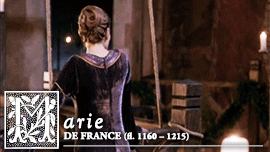



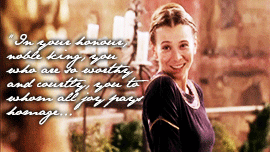
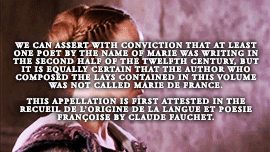




Medieval Women Week || Favorite woman writer
↬ Marie de France
Who was this versatile author, the first woman of her times to have written successfully in the vernacular? She was definitely not Marie de Champagne, daughter of Eleanor of Aquitaine and patroness of Chrétien de Troyes, as Winkler suggested. A tempting, but by no means fully convincing, identification is with Marie, abbess of Shaftesbury in Dorset, illegitimate daughter of Geoffrey Plantagenet and half-sister to Henry II. … A claim has been made, albeit somewhat thin, for Mary, abbess of Reading. This abbey was well known as a centre of literary activity and had in its possession the Harley manuscript containing, as we have seen, both the Fables and the Lais. There is no clear-cut reason why either work could not have been written by an abbess or a nun, and there is some slight evidence of experience of monastic life in Le Fresne, Yonec and Eliduc. But the prominence of the motif of adultery in the Lais (see also fables 44 and 45), Marie’s attitude towards the dissolution of marriage in Le Fresne and Eliduc, and her evident interest in the chivalric life suggest that these love poems were not written by someone steeped in ecclesiastical ideology.
… Marie de France was certainly an educated lady of good family, who knew Latin well enough to have contemplated translating a Latin work into French (Lais, Prologue, vv. 28–32) and to have done so in the case of the Espurgatoire. She was obviously a good linguist and acquired a sound knowledge of English before translating the fables. She was also fully conversant with the life and aspirations of the nobility of her time. Her education could well have been obtained in a convent and her knowledge of court life from her upbringing and personal experiences in England. Was she Marie, the eighth child of Waleran de Meulan (also called Waleran de Beaumont), a member of one of the greatest of the Norman houses? Waleran’s fief was in the French Vexin, which would tally with Marie’s statement that she comes from France and explain her evident local knowledge of the town of Pitres in the Norman Vexin… Marie de Meulan married Hugh Talbot, baron of Cleuville, owner of lands in Herefordshire and Buckinghamshire, as well as in Normandy, and a member of a family prominent in several English counties including Devonshire, Gloucestershire and Kent. Marie’s father is an interesting figure – a loyal and courageous soldier, but also a well-educated man who may have written Latin verse. Moreover, several of the manuscripts of the Historia Regum Britanniae of Geoffrey of Monmouth are dedicated to him. It is tempting to think that his daughter may have known William of Gloucester, a possible Count William, as his father was also one of Geoffrey’s dedicatees. Marie de Meulan may, however, have been too young to be Marie de France, as her birth seems to date from the 1140s, perhaps as late as 1150.
The most recent identification has been as Marie, countess of Boulogne after 1154, daughter of Stephen of Blois (King of England, 1135–54) and of Matilda of Boulogne. Educated in a convent, Marie de Boulogne became abbess of Romsey in Hampshire, but was removed from her convent by Henry II, who wanted to keep Boulogne in his sway. She was married off to Matthew of Flanders and thus became the sister-in-law of Hervé II, son of Guiomar of Léon... Eventually, at some time between 1168 and 1180, Marie de Boulogne returned to a convent, perhaps that of Sainte Austreberthe at Montreuil-sur-Mer in her own county. Her Count William could have been William of Mandeville, a crusade companion of Philip of Flanders, her husband’s brother. The ‘noble king’ would probably have been the Young King, as Philip and Matthew, originally supporters of Henry II, changed sides in 1173. Marie herself may have already been a supporter of the Young King, as in 1168 she sent Louis clandestine information about the secret negotiations between Henry and the Emperor Frederick.
— The Lais of Marie de France translated with an introduction by Glyn S. Burgess and Keith Busby
#medievalwomenweek#marie de france#english history#french history#european history#women's history#medieval#history#nanshe's graphics
30 notes
·
View notes
Text
Technology just revealed a new name to women’s history.
For nearly 1,300 years, no one knew it was there. The name of a highly educated English woman, secretly scratched on to the pages of a rare medieval manuscript in the eighth century, but impossible to read – until now.
Academics have discovered the Old English female name Eadburg was repeatedly scored into the surface of the religious text, using a method that kept it hidden from the naked eye for more than 12 centuries.
The covert writing of the woman’s name was finally revealed when researchers at the Bodleian Library in Oxford used cutting-edge technology to capture the 3D surface of the ancient manuscript, a Latin copy of the Acts of the Apostles that was made in England between AD700 and AD750.
It is the first time this technology, capable of revealing “almost invisible” markings so shallow they measure about a fifth of the width of a human hair, has been used to record annotations on the surface of a manuscript.
“There are only a limited number of surviving early medieval manuscripts which contain clear internal evidence of a woman having created, owned or used them,” said Jessica Hodgkinson, a PhD student at the University of Leicester who made the discovery while researching her thesis on women and early medieval manuscripts.
“Most of these manuscripts are from the continent – it is much rarer to find evidence of this in surviving manuscripts which were made and used in the geographical area we now call England.”
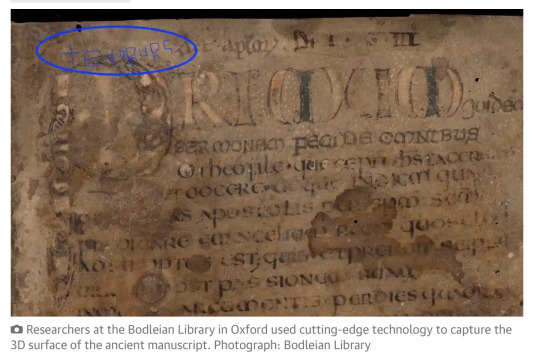
Writing Eadburg’s name on the book quietly asserted her power and high status at a time when only a few elite, highly educated women were able to write and read both Old English and Latin. “It’s a hugely significant and very powerful text – the word of God, conveyed through the apostles. And I think that might be at least part of the reason why somebody chose to write Eadburg’s name into it, so that she was close to that.”
It is not clear why the name was written so stealthily, with a drypoint stylus, rather than ink. “Maybe it was to do with the resources that person had access to. Or maybe it was to do with wanting to leave a mark that put that woman’s name in this book, without making it really obvious,” Hodgkinson said. “There could have been some reverence for the text, which meant the person who wrote her name was trying not to detract from the scripture or compete with the word of God.”
Significantly, she found Eadburg’s name passionately etched into the margins of the manuscript in five places, while abbreviated forms of the name appear a further 10 times.
This suggests it is likely to have been Eadburg herself who made the marks. “I could understand why somebody might write someone else’s name once. But I don’t know why you would write somebody else’s name so many times like that,” Hodgkinson said.
An Old English transcription, and tiny, rough drawings of figures – in one case, of a person with outstretched arms, reaching for another person who is holding up a hand to stop them – were also discovered etched on to the small book, which is barely bigger than an A5 pamphlet.
Hodgkinson hopes further study will reveal the meanings of these figures and the ancient transcription, which has so far proved impossible to translate.
She also hopes to eventually discover who Eadburg was. Certain features of the manuscript suggest the book was produced in Kent, where a woman called Eadburg was abbess of a female religious community at Minster-in-Thanet in the mid-eighth century. However, there are at least eight other known contenders for the role.
But whether or not these mysteries are ever solved, for Hodgkinson there is something very empowering and meaningful about the discovery of Eadburg’s name. “Still, to this day, there’s this human urge to leave a mark of your presence on something that is meaningful to you or is a record of where you’ve been,” she said. “We don’t know all that much about Eadburg, but now, because of this amazing technology, we’ve seen her name, we know she was there. She’s here, in this book – and it speaks across the centuries.”
#England#Eadburg#Women in history#medieval history#old english#Acts of the Apostles#Latin#Bodleian Library in Oxford
558 notes
·
View notes
Note
I have a question about pluralization in your conlang! From what I understand, your nouns aren’t conjugated for number. Are there any words where the plural survived sound changes? I ask this because my accent of Spanish (Dominican accent) loses syllable final S, meaning that only some words have a plural while others can only be distinguished by number by the verb and article. I’ve also heard that French is similar in that regard but my knowledge of it is very limited.
Also this is unrelated to the first question, but I’d like to see some examples of Boral names. The etymologies of names are very interesting to me and im curious if some Celtic names still survive in your conlang!
Hi—these are great questions! :D
Pluralisation
Final /-s/ is lost really early on in the development of Borlish; it's one of the very first sound changes that distinguishes it from the mainland Romance languages, occuring by around 500 AD. This, along with the loss of the genitive case (replaced with the ablative) makes the noun declension of typical nouns look like this:

Notice that masculine nouns typically have only two forms, and feminine nouns only three. Once final vowels also get neutralised to schwa (and eventually lost entirely), the noun paradigm for regular nouns has completely collapsed.
A few nouns briefly retain an irregular paradigm of the following shape, with a separate nominative singular:

However, by the late Old Borlish period these have all been levelled to (usually) the oblique form; sour "sister" is the only counterexample where instead the nominative singular survives.
Several strategies for marking noun number were innovated during the Old Borlish period, mostly involving demonstratives like ille, iste and ipse. However, the forms that survive to the present derive from the demonstrative hic "this". Specifically, we have:
oc "singular" < hoc, neuter singular
ec "plural" < haec, neuter plural
In the late Old Borlish period we see the redevelopment of a proximate-distal contrast, with new distal demonstratives formed using the adverb i "there" (since lost; cf. Modern Borlish la < illāc):
oç < oc i "that" < hoc ibi
eç < ec i "those" < haec ibi
Coda: Some Modern Borlish Names
There are a few Celtic names which survive in modern Borlish, for various reasons.
A very few names entered Borland Latin from the local Celtic during the Roman Empire. As a possible example, the male name Ivocq is thought to reflect Borland Celtic *iwok- "like a yew tree".
More Celtic names enter Borlish at various stages since the medieval period. One of the earliest is the female name Jonnovar, cognate with Guinevere and Jennifer, and which is also used as a common noun meaning "butterfly".
21 notes
·
View notes